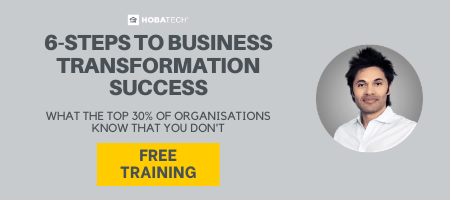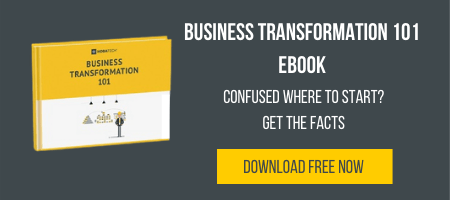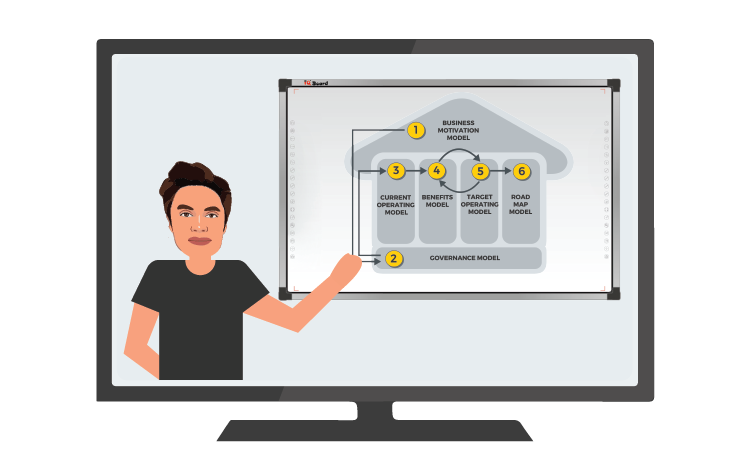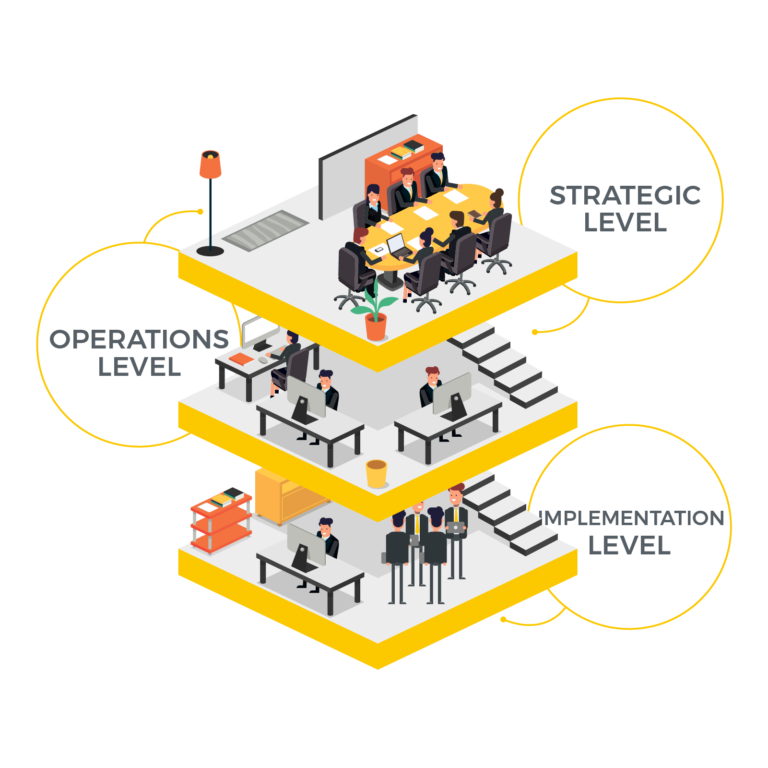Does it feel like you’re pushing a boulder up hill on your own, with no end in sight?
You’ve worked with the Business Stakeholders who have agreed the need to change, you’ve gone away and the team has put together their designs of a future operating model that meets the objectives and produces a leaner, more efficient Organisation, and a seamless experience for the Customer, reduced bottlenecks, reduced handoffs, improved response times to queries, handled and resolved issues at the first point of contact (not the 10+ it used to take).
Now, you’ve taken the proposals back to the same group for approval and the same group that signed up for the changes is now saying “this is great, for the Organisation, but not for my department”.
Unquestionably, COVID-19 has brought forth a wide number of difficulties for all the sectors in the world. With multiple lay-offs in different parts of the world, this virus is causing catastrophic changes in the business sector. Although every issue that is being faced due to the ongoing pandemic holds great significance, such as how can you induce digital transformation to fight COVID-19, the abrupt jump from normal corporate life towards practicing Work-from-Home, and how to manage the current crisis transformation, we believe one of the most pressing issues is the management of change in businesses after this global outbreak.
In this article, we will discuss the following:
- Principles of Kotter’s process for leading change.
Many people share the belief that Kotter’s change model is accurate for almost all conditions. However, contrary to popular belief, we will discuss how Kotter’s change model will not be effective in the current situation.
- Kurt Lewin’s 3-phase model of change.
- How can businesses fight and survive the unusual change after the end of the current pandemic?
Let’s start with Kotter’s model for leading change.
Kotter’s 8-Step Process for Leading Change
The modern leadership and change management guru, John Kotter, introduced his 8-step change model in his book “Leading Change” in 1995. Since then, it has been one of the most reviewed change management mechanisms in the business sector. Let’s see what each step entails:
1. Create a Sense of Urgency
The first step in creating and accepting change is for the company to really want it. Developing a sense of urgency means that the company needs to have a surrounding environment that encourages change. It helps in instilling motivation in the employees.
Many businesses opt for showcasing poor sales statistics or their decreasing dominance with their competition. To be convincing, this step requires honest dialogue about the company’s financial and competitor position in the marketplace, which can make this an uncomfortable step for company’s to execute.
2. Build a Powerful Coalition
The importance of convincing people that change is necessary is a key part in the process. Managing change is important, but where is falls down is senior managers need to demonstrate support to their employees through actions, not just words.
Forming a powerful coalition means you create a team of influential people who have the professional and social capabilities to influence others.
To form your “change coalition” successfully, you need to do the following:
- Identify strong and passionate leaders in your organisation,
- Encourage an emotional commitment from your leaders,
- Invest time in team building,
- Keep the team strong, and replace any weakness in your coalition team to fill in the gaps, where necessary which makes this step equally hard to implement (replacing coalition team members).
3. Form a Strategic Vision
It is only natural to identify a range of different ideas and solutions when you first think about change. You can either spend time developing novel and interesting ideas, or you can identify the one big Vision people can easily relate to, grasp and get behind, supported by the smaller novel and interesting ideas.
The clearer the Vision, the more people can form what that means to them, the more you can expect your people to back, the converse is true. The more vague the Vision, the less your people can identify with it, internalize it, and therefore get behind it.
Equally, a Vision without a plan is like a goal without a deadline, it’s a wish or an empty promise. You need to create a detailed strategy for implementation, one in which your coalition team can easily comprehend and own.
A Vision without a plan is like a goal without a deadline, it's a wish or an empty promise.
Heath Gascoigne Tweet
4. Communicate Your Vision
Creation of a vision is an important step, however, its realisation is the determining factor whether your change or transformation is a success or failure in the entire process. The creation of the Vision is not the end product, it is merely only the beginning. Repetition is the mother of all learning, which you have to do with the Vision. The Vision needs to be stated, and reinstated frequently, in order to keep the people motivated.
Part of the communication is through “walking the talk” through behaviour. In order to sync your actions and your words in front of your team, as Change Leaders, we need to demonstratethe kind of behaviour expected from others – through leading by example.
The challenge here is often leaders will take the position of ‘do as I say, not as I do’, and don’t themselves follow through on their own instructions. This doesn’t encourage the behaviours, and therefore outcomes that produce the long term change your initiative is looking for.
5. Enable Action by Removing Barriers
Despite best intentions, very few (if any) change campaigns complete without some form of resistance. It is safer to say ‘you should expect resistance’. The biggest resistance is not from the technology or process you are changing, it is people. People by nature are adverse to change, so knowing this, you should prepare yourself and your team in advance.
In order to deal with the resistance, you should follow these steps:
- Task your change leaders to implement the discussed change structure.
- Reward people who are responsible for initiating and maintaining the process of change by recognising their contribution.
- Cater to the needs of those who are resisting change and take necessary measures to fulfill their demands.
- Removing barriers as quickly as they are identified to prevent contagion.
6. Generate Short-Term Wins
The journey to success is often not an overnight even, but one that takes months or years. So how do you maintain enthusiasm and motivation over long periods and keep morale high? In order to improve the morale of your employees, your company should give the employees a taste of victory both early in the change process, but constantly throughout the process.
Pessimism is a change killer. You need to weed it out as soon as it is identified. Pessimism can spread like wild-flower if left unattended. You can’t prevent it though, it is evitable.
Pessimism is a change killer. You need to weed it out as soon as it is identified. Pessimism can spread like wild-flower if left unattended. You can’t prevent it though, it is evitable.
Heath Gascoigne Tweet
What you need to do it create short-term targets that your change team can achieve in regular intervals to maintain a constant increase in their motivation. The trick here is to make the targets a stretch to encourage action, but not too much of a strength to discourage it.
7. Sustain Acceleration
According to Kotter, many change campaigns fail because people think they have achieved victorytoo soon. In order to achieve real change, you need to remain in the long-haul. Although quick wins are necessary to keep yourself motivated, long-term change requires a large number of short-term wins to create real change.
You need to continue the revision of your goals after every win to continue building on the momentum.
8. Institute Change
Lastly, all your efforts to create change need to stay with the company long after successful implementation. This is about creating a new culture, a change culture. These new behaviours should become a necessary part of the core of your organisation.
Even after achieving change, you need to continue to apply the same change process and mindset to keep improving – through continuous improvement, that is how you ensure that the change is substantial and long-lasting.
Disadvantages of Kotter's Change Model
Although Kotter’s model of change is widely famous for its elaborate steps to implement change, there are a number of disadvantages due to which it will prove to be challenging in during the current crisis:
- Kotter’s model is a top-down approach. The disadvantage of this approach is that it fails to include everyone in the co-creation of the Vision. Top-down approaches can be ineffective if you expect participation from all levels of your company, thought of as ‘just another initiative from the guys upstairs’ if not properly implemented, given there is unlikely to be any level of the Organisation structure not affected by the current crisis.
- Although there are steps to manage resistance against change, many people can still dwell upon their feelings of resentment if their demands regarding the change are not being first identified and acknowledged, if not also considered.
- The steps seem a bit mechanistic. Organisations consist of communities of people that need to be dealt with flexible strategies in order to effectively cater to their needs. No one approach (often) works for everyone.
- None of the steps can be skipped from the model.
- The entire procedure demands a great deal of time. Looking at the current situation, this is exactly what most businesses lack right now! We need quick solutions to target the inefficiencies and get back on track.
So what to do? First step – don’t panic! I have put together an informative anti-crisis transformation guide and prepared a webinar on how you can combat the changing conditions. Different industry experts will be disclosing their best kept secrets on how to implement a Plan-B when things go awry – so don’t forget to join the webinar!
Kurt Lewin’s 3-Phase Model of Change
Considering the current situation of the global outbreak, Kurt Lewin’s 3 phase change model can prove to be extremely effective.
The model consists of three steps:
- Unfreeze,
- Change,
- Refreeze.
We will discuss these below:
1. Unfreeze
Since, COVID-19 has hit the business community without giving them an opportunity to prepare for it, they need to make changes at a rapid pace to survive. The unfreezing step of Lewin’s model suggests to:
- Determine what aspects of the organisation need to change. This can be analysed by performing detailed surveys throughout the company.
- Ensure that the senior management is on the same page and is ready to provide evident support with respect to change management.
- Create the need for change by explaining the significance and consequences of not opting for changes.
- Diminish all kinds of doubts and concerns from the people’s minds to ensure change is brought forth effectively.
2. Change
Lewin’s model clearly states that the change step will eventually bring difficulties for many people. However, these difficulties can be eradicated and catered to by:
- Communicating with the affected employees. They need to be told about the benefits of change in the aftermath of this process.
- All kinds of rumors need to be eradicated to ensure seamless support from the employees/team members.
- Involving all the team members to make them aware of the entire process. This will help them believe that the management’s actions and words are in sync and there is a definite goal at the end of the struggle.
3. Refreeze
After making the necessary changes, these changes will have long-term benefits on the organisation. The organisation will be able to have consistent job descriptions, accurate organisation charts, etc. In order to ensure the changes stick, the management needs to take the following measures:
- Changes need to be sewn in the core of the culture of the organisation.
- Necessary steps should be taken to sustain the change. This can be done by creating different reward systems, maintaining feedback systems, and strengthening the organisational structure to support maximum communication.
- Employees should be provided with training to practice the change in order to continue practicing it.
3 Steps to Fight the Unusual Changes During the COVID-19 Pandemic
Due to the current pandemic, the corporate environment will witness significant changes of unusual proportion. People will have to make difficult decisions; decisions that may have never been taken before. Following Kurt Lewin’s 3-phase change model, we would like to suggest three (3) ways businesses can cope with this unusual change.
1. Senior Leadership Support
A company’s most valuable asset is the set of senior leaders present in the company. They hold significance due to their expertise in tackling difficult situations. In a time of a crisis such as the current one, senior leaders are required to step up and provide maximum support to their fellow colleagues. They need to:
- Establish a concrete and concise Vision for the change management process. They need to walk the colleagues through the entire process to help them see the anticipated outcomes of change.
- Appoint a team of colleagues who are efficient in managing the process.
- Interact with employees to understand how they perceive the change.
- Analyze the progress and filter out the barriers of progress to ensure the process remains seamless.
Demonstrate change to motivate the team and other colleagues
2. Survey
Employee surveys can be extremely helpful in the current situation. The reason is that COVID-19 has completely stumped companies on how to cope with the changes in the global market.
Since the economic sector hadn’t seen a situation of this kind in a long time, there are no right ways to deal with it. However, involving your employees in the decision-making process to value their opinions and the effect of change on them, can prove beneficial for businesses in the long-run.
Businesses should also send out surveys to the consumers to see how they are reacting to the change. They can then analyze their answers and respond accordingly.
3. Communication
Seamless and synchronous communication is integral in implementing a change model. The leaders of your organisation need to implement proper communication channels among the employees and management to ensure they are aware of the effects of change in the company.
Employees want to know the WHY? – why they are going through the process. They need to be presented with convincing facts that can help them get onboard with the change management team.
Similarly, the change management team has a responsibility to completely satisfy the demands of the employees to encourage them for their cooperation in the process.
Change management is a difficult process to execute successfully. However, if you and you’re your Organisation are flexible in your approach and follow the appropriate course of action, you stand a good chance you will succeed in implementing quick but sustainable change in your organisation.
I hope you found great value in this post! Let me know what you would think and would like to see next in the comments below!
Thank you for reading this!
Sincerely,
Heath Gascoigne
P.S. If you want to join our Business Transformator community of like-minded Business Transformators, join the community on the Business Transformator Facebook Group here.
P.P.S. If you want to learn more about business transformation, check out The Business Transformation Playbook here.
For more information, visit https://www.hoba.tech



















